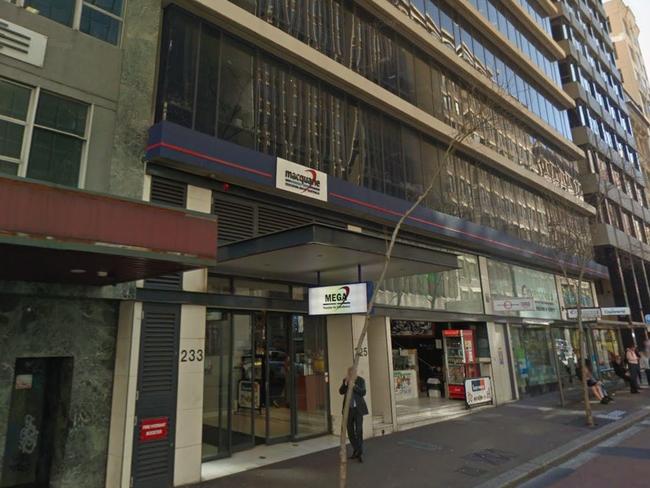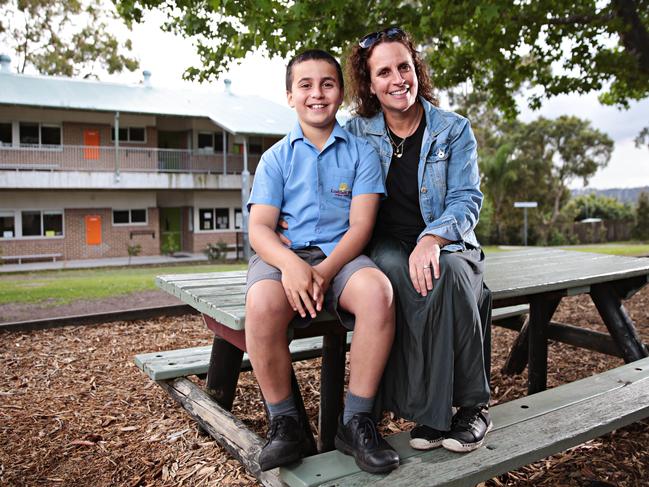NSW school fees: How much parents are paying every year
There is a $37,165 annual difference between what parents at NSW’s most expensive school fork out in fees and charges and what those at the state’s cheapest are paying. Should it matter? SEARCH THE LIST

Schools Hub
Don't miss out on the headlines from Schools Hub. Followed categories will be added to My News.
The amount of money parents in working-class suburbs contribute to their child’s education should not be misinterpreted as them not caring, a leading education expert has pleaded.
A comprehensive analysis of fees, charges and parental contributions paid by parents in all NSW schools has found parents whose children attend Sydney Grammar School contributed the most of any in NSW — paying an average $37,166 in 2017.
Less than 50km away, in Sydney’s west, parents with children at St Marys Public School contributed on average just $1 per student.
Southern Cross University Associate Professor David Zyngier said private schools tended to have more affluent parents than the public system, but said cash-strapped parents still valued education.
“All parents want the best for their kids and all parents value education and respect educators highly, probably more so in the working classes than the upper classes,” Prof Zyngier told The Daily Telegraph.
“We find in disadvantaged school communities that teachers are actually forking out of their own pocket for supplies because principals of the schools have to manage a budget and majority of that goes on salaries and wages and there is nothing left for resources.”
While Sydney Grammar is the most expensive school in the state to attend it is more than pulling its weight academically, with 10 students coming first in their HSC course last year.
Little-known Macquarie Grammar School — which was established in 2004 and describes itself as a “private, independent, secular, non-selective, coeducational school” — is the second most expensive school in NSW.

Based in Clarence St in the Sydney CBD and with just 115 students, parents in 2017 paid on average $36,470 in fees, charges and contributions.
Four of the 10 schools where parents contributed the least are located in working class suburbs in Sydney’s west and southwest.
Parents at Busby Public School paid on average $16 per student in 2017, with MySchools data revealing 77 per cent of students are from a low income home.
Parents at neighbouring Cartwright Public School forked out just $4 more per student.
In regional NSW, parents with children attending Griffith Public School contributed on average $14 each for the school’s 380 students, while Cobargo Public School parents in the state’s southeast handed over on average $23 each in 2017.

Lindfield East Public School took in $1335 in parental contributions per student in 2017 — a figure the school’s Parents & Citizens Association president Tracey Rath said parents were happy to pay.
“Once they see what they’re getting for their money it is not hard to convince them,” Ms Rath said.
“They are pretty much getting a private school education and facilities at a public education cost.”
She said the money helped pay for overseas trips for students and the salaries of English as a second language teachers.
“With our school, because we have very successful NAPLAN results, the actual funding we get for extra things like learning support or computers, we don’t get nearly as much as other schools that are less fortunate.”
“It goes towards supporting things that we don’t get funding for, so we’re really, really lucky that we have a supportive community who sees that is a priority.”

But a spokeswoman for the Federation of Parents and Citizens Association said parents should not feel pressure to provide a contribution.
“The whole purpose of public education is to be without charge fees, which is supposed to put all students in public education on a level playing field,” the spokeswoman said.
“If schools start relying on parent contributions for educational resources, that will obviously mean schools in higher income areas will be advantaged, as parents there are able to afford large contributions.
“Under legislation, it is the responsibility of governments to provide educational resources, and parents should not feel pressure to provide funds,” she said.
“This is particularly important in light of the rising costs of living for parents and the fact that parents across the state are currently struggling under the crippling drought.
“If schools are relying on parent contributions because they lack public funds, they should partner with parents and families to lobby the government.”
